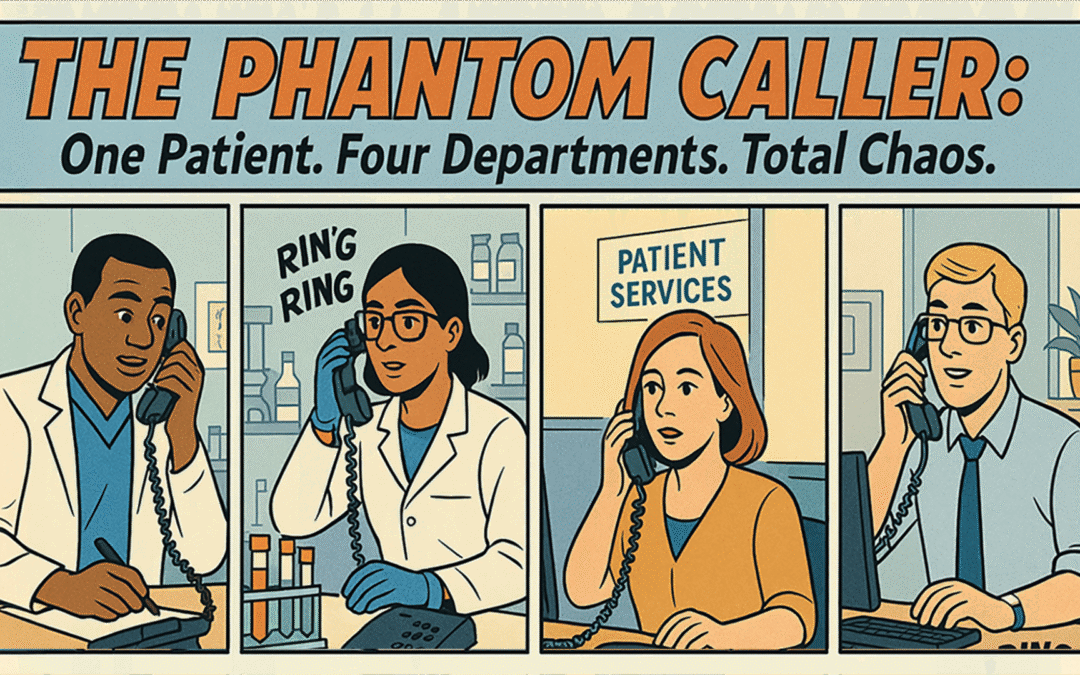We had a patient who thought he figured out how to game the system. I’ll call him Mr. C. If he called enough departments, someone would eventually solve his problem.
So he called everyone.
He’d call the clinic. Then the lab. Then patient services. Then back to the clinic. If someone didn’t answer, he’d try another number. He was anxious and wanted help fast.
I get it. When you’re worried, you do what you think will work.
But here’s what happened. Every person he called started working on his problem. The clinic pulled his file. The lab checked his results. Patient services opened a case.
Everyone was trying to help. But nobody knew the others were helping too.
The Mess This Created
Three people would work on the same thing. Each person had different information. None of them knew about the others.
Mr. C would tell the clinic one story. He’d tell the lab something a bit different. By the time he talked to patient services, the details had changed again. Not because he lied. He was just stressed and telling his story over and over.
Then the real problem started.
The clinic would call the lab. “Hey, what’s going on with Mr. C?”
The lab would say, “We already fixed that this morning.”
But they hadn’t fixed the same thing. They fixed a different piece based on what Mr. C told them on the phone.
Now everyone had to stop. Compare notes. Figure out what was real. Start over.
Do this across four departments and you’ve got chaos. All because one worried patient made phone calls.
The worst part? While everyone sorted out the confusion, Mr. C’s real problem didn’t get fixed. He’d call back upset, and it would start all over again.
We weren’t bad at our jobs. Our system just couldn’t handle one person calling multiple places.
What Would Have Fixed This
We needed one place where everyone could write down what they knew.
Not fancy computers. Not expensive software. Just one spot where everyone looked.
If the clinic wrote down Mr. C’s problem, the lab could see it when he called them. They’d know someone was already helping. When he called patient services, they could check and say, “The clinic is working on this right now.”
Getting information to the right people matters. A lot. Bad information flow stops good care from happening.
We didn’t need to stop Mr. C from calling. We needed a system that could handle his calls without falling apart.
This Happens Everywhere
I still think about Mr. C. I see the same pattern in healthcare all the time.
This wasn’t just a VA problem. Modern healthcare facilities and home care agencies deal with this every day. The tools might be different, but the pattern is the same.
Worried families call everyone trying to get answers. Good people work hard but don’t know what others are doing. Information lives in different heads and causes delays.
It’s not a people problem. It’s a system problem.
The places that do this well don’t use fancy tools. They just made one simple change. Everyone puts information in the same place. Everyone checks that place. When someone calls worried, there’s one path to follow.
Good people need systems that help them work, not systems that turn their hard work into a mess.
What About You?
Ever deal with this? Someone who calls everyone because they’re worried and want answers?
How do you handle it? What actually works when anxious people need help from your team?

